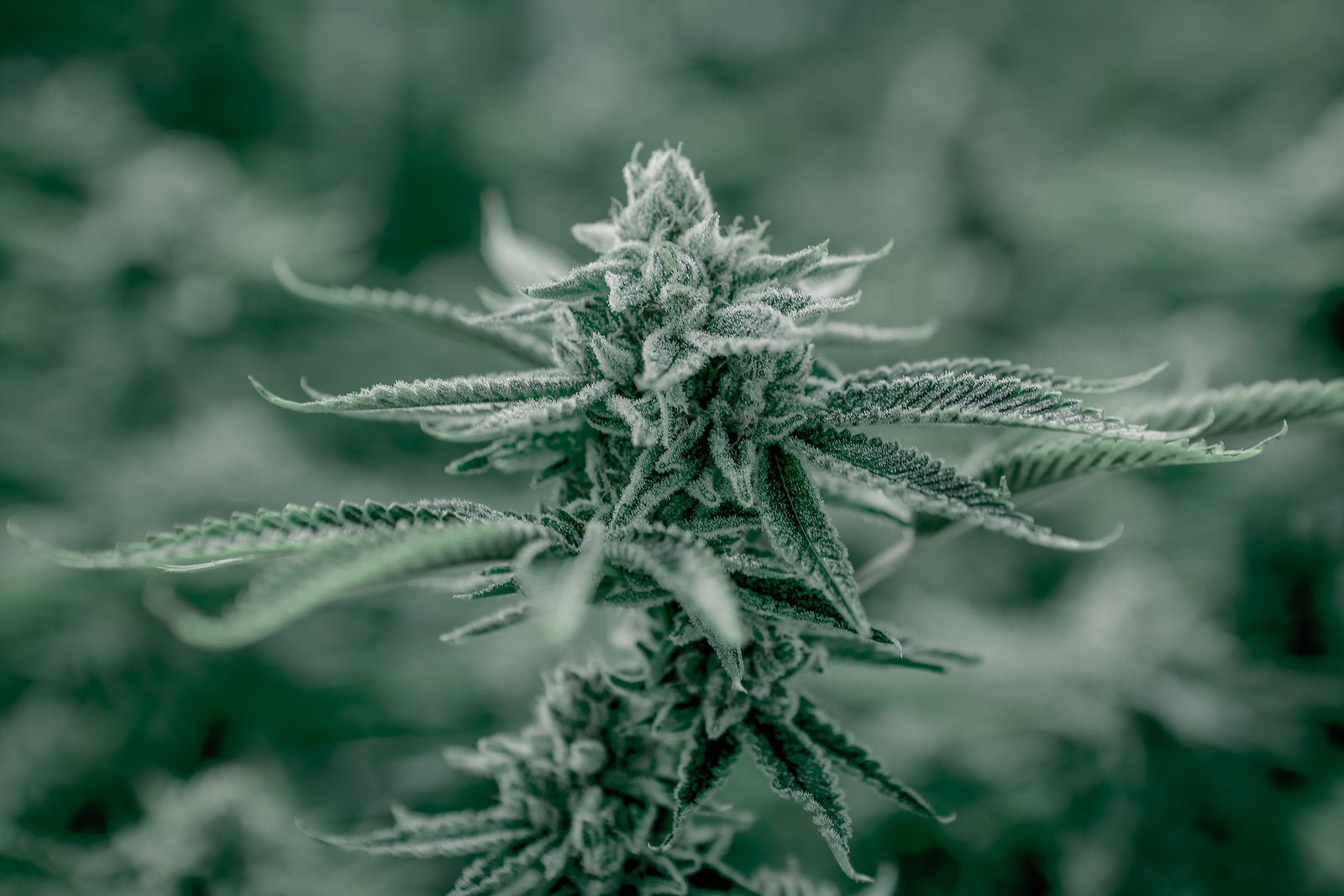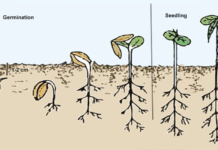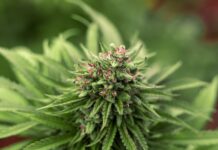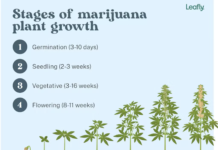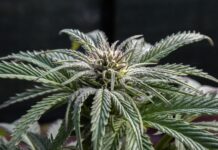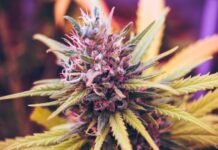All life needs food and drink, including plants. However, over-watering and over-fertilizing are also the two most common mistakes people make when growing a cannabis plant. It is therefore important to learn how much fertilizer your plant needs and what kind of fertilizer it needs when.
Table of Contents :
NPK (macronutrients)
Any healthy organic soil system requires the following macronutrients:
- Nitrogen (N)
- Phosphorus (P)
- Calcium (K)
These three nutrients are abbreviated NPK, and are normally stated on the back of the nutrient fertilizer you buy. These numbers represent the percentage of each nutrient in the solution. For example, NPK 4 – 15 – 13 means that a fertilizer has 4% nitrogen (N), 15% phosphorus (P) and 13% calcium (K).
Although the plant also needs other nutrients, these three are the most important.
Nitrogen (N)
Although Earth’s atmosphere contains 78% nitrogen gas (N2), most organism cannot directly use this resource due to the stability of the compound.
Nitrogen is a crucial part of plant chlorophyll, the green pigment that enables plants to use sunlight to convert carbon dioxide and water into oxygen and glucose (energy). Without nitrogen, your cannabis plants starve and the plant cannot grow.
The plants need nitrogen at all stages of growth. Along with helping with photosynthesis, nitrogen is also a component of amino acids, the building blocks of protein. Just as protein helps us develop stronger muscles, it helps your plants develop stronger stature so they can support bigger, denser buds.
In addition, nitrogen is a key building block in DNA and RNA. Without it, your organic cannabis plants cannot grow or reproduce.
However, too much nigrogen is just as harmful as too little. Excess nitrogen results in excess stem and leaf growth and a weakened root system. It can also be toxic to surrounding groundwater and water systems.
If you need to add nitrogen to your organic soil system, you can do so with manure, compost and fishmeal.
Phosphorus (P)
Phosphorus is necessary to grow large, healthy organic cannabis buds.
Like nitrogen, phosphorus plays a role in photosynthesis, respiration, cell division, and energy and water storage and use. Phosphorus is a crucial component in plant growth and maturity.
Signs that the plan is not getting enough phosphorus are: weak stems, stunted growth, blue-green leaves and little or no flowering. Too much phosphorus is toxic to the soil system and the surrounding environments.
You can add phosphorus to the soil through the following organic sources: rock phosphate (rock dust), fish or bone meal, compost and animal manure. Phosphorous is long-lasting and slow acting. Using fertilizer in your soil before planting is generally a good idea.
Potassium (K)
Potassium is responsible for regulating the water and salt levels in plant stems so that they do not wilt. Calcium also plays a role in photosynthesis and energy transfer.
Without sufficient potassium, the plant will become weak and devoid of the macronutrient necessary to create stems strong enough to house healthy buds. A lack of potassium can also lead to yellowing of leaves with brittle or burnt edges. Leaves will eventually die off if the deficiency continues.
On the other hand, excess potassium can interfere with the plant’s ability to absorb other nutrients, so again, be careful before proceeding with fertilizer. A simple soil test from your garden center or online can save you from future frustration.
Secondary macronutrients and micronutrients
The secondary macronutrients are calcium, magnesium and sulphur. In order to grow healthily, all plants also need these nutrients in addition to the NPK substances (macronutrients).
Micronutrients, such as manganese, boron, sulphur, iron, molybdenum, zinc and copper, are present in most fertilizers, but in smaller amounts than macronutrients.
Silicon or Silica (Si) is a very important element that is not considered essential, but very beneficial. Silica helps plants grow stronger cell walls and stronger stems and leaves. Adding silica or silicon dioxide to your medium ensures strong plant development. Silica is very common in most soils outdoors, but plants grown in pots with soil mix, coco and hydroponic systems need silica additions.
Nutrients for the vegetative stage
In the vegetative stage, which lasts from 4 to 12 weeks (or more), the plant needs lots of light and nutrients to grow and become healthy.
In the vegetative stage, the cannabis plant needs high levels of nitrogen (N), as this is the nutrient responsible for regulating protein production and the growth of leaves and stems.
Fertilizer for the vegetative stage should contain a high percentage of N (nitrogen) and a lower percentage of P (phosphorus) and K (potassium). A good NPK ratio in this stage is 3:1:1.
The most common nutrient deficiency in the vegetative stage is nitrogen deficiency. Nitrogen deficiency shows up in yellowing of old leaves at the base of the plant, and the whole plant turns pale green. If the tips or edges of the leaves turn brown, or the green color of the foliage darkens, the plants may be suffering from nutrient toxicity or over-fertilization.
Nutrients during the flowering stage.
In the flowering stage, the plant needs a lot of phosphorus and calcium and not so much nitrogen anymore. In the early bloom (flowering) stage an NPK ratio of 5:10:7 is ideal. Micronutrients like calcium and magnesium may also be helpful at this point.
In mid-bloom (flowering) stage an ideal NPK ratio is around 1:3:2, with more phosphorus and potassium.
In the late bloom (flowring) stage we reduce nitrogen further. An NPK ratio of 4:10:7 is recommended. Some does not give nitrogen at all in this stage.
Proper feeding of the plants during the flowering phase will result in a healthy development of the plant along with a bountiful harvest, which is what every grower wants.
Biostimulants and nutritional supplements for the flowering stage increase and optimize the absorption of fertilizers, resulting in thicker, more compact flowers with a better taste. They also promote the production of terpenes and cannabinoids and increase the natural resistance of plants to diseases and stress.
Recommendation
| Stage | Vegetative | Flowering |
| Nitrogen (N) | HIGH | LOW |
| Phosphorus (P) | MEDIUM | MEDIUM/HIGH |
| Calcium (K) | HIGH | HIGH |
Cannabis fertilizer
Now that we have gone through which nutrients your cannabis plant needs, the next challenge is to find out which fertilizer is best to give your cannabis plant so that it gets the nutrients the plant needs.
Fertilizer types
We distinguish between two main types of fertiliser:
- Organic fertilizers – Agricultural waste, animal manure, municipal sludge
- Chemical fertilizers – Nitrogen, Phosphorus and Potassium fertilizers
These types of fertilizers come in two forms:
- Liquid nutrients and additives mixed with water.
- Powdered nutrients and additives, mixed or sprinkled in soil.
Organic fertilizer
Organic fertilizers are fertilizers made from natural sources such as fish bones, shells, vegetables, algae, guana and other compost sources.
Organic fertilizers increase the amount of organic matter in the soil, and change the chemical composition of the soil. Organic fertilizers are therefore considered one of the essential elements for “healthy green food”.
The advantage of organic fertilizer is that it contains all the nutrients the plant needs, not just the macronutrients (NPK) that chemical fertilizers do. Organic fertilizers therefore have more nutrients and compounds than chemical fertilizers, which gives the flowers a more intense aroma and taste.
Since organic fertilizers are absorbed more slowly than chemical fertilizers, organic fertilizers are easier to use as it is more difficult to accidentally over-fertilize. Root cleaning is also much easier, and since everything is organic, you respect the environment.
The disadvantage is that this form of fertilizer often does not contain enough of the macronutrients the plant needs in the various stages of its life cycle. For that reason, we often have to supplement with inorganic fertilizer to meet all the plant’s needs. Organic fertilizers can also be difficult to obtain, are not sterile, have low nutrient content and generally cost significantly more than synthetic fertilizers.
Chemical fertilizers
Chemical fertilizers are made through the use of various chemical processes and techniques to give the fertilizer the desired macronutrients. This form of fertilizer therefore contains no natural elements found in nature. This form of fertilizer is less expensive than organic fertiliser.
The advantage of inorganic fertilizer is that you can buy fertilizer that only contains the macronutrients you need. The disadvantage is that this form of fertilizer does not contain the other nutrients the plant needs to be able to make full use of the macrospores.
Also, since chemical fertilizers are absorbed quickly, you can easily over-fertilize and kill your plant by giving it too much fertilizer. The advantage is that this form of fertilizer makes the plant grow faster than when using organic fertiliser, as the plant absorbs the nutrients faster. To achieve the desired result, it is therefore important to feed carefully with the frequency and dosage of the fertilizer to avoid root blockage.
It is strongly recommended to use enzymes during the growing process and cleaning agents towards the end of the flowering process to make the root cleaning process easier and remove any bad taste from the buds.
The difference between cannabis fertilizers and supplements
While a base fertilizer contains all the macronutrients a cannabis plant needs, supplements are substances used to improve the physical condition of the soil, to help plants grow or to increase yields. When a product has a very low % of NPK it is probably a supplement and not a base fertiliser.
Homemade fertilizer
Homemade preparations can be sustainable and cheap, but making the right mixture can be complicated and time-consuming.
Professional fertilizers – where all the hard work of creating a cannabis-specific nutrient profile is done for you – can save a lot of time and effort and can ensure that your fertilizer is not too “hot” (ie contains too many nutrients for your plant, burning it out and damage growth).
Fertilizer manufacturers
Some well-known and well-known producers (manufacturers) of cannabis fertilizer are:
- Advanced Nutrients Bloom, Grow, and Micro
- Dyna-Gro
- Kyle Kushman’s Vegamatrix
- Canna Coco A & B
Root stimulants
It is recommended that you use a root stimulant from the moment you get a germinating seed or receive a clone.
Mycorrhizae
Mycorrhizae are beneficial fungi that favor healthy, fast and strong root growth. By adding mycorrhizae fungi to the soil, you achieve a number of benefits:
- Higher water and nutrient uptake such as nitrogen, phosphorus and potassium (NPK).
- Better root development and growth.
- More tolerance for overwatering and excess nutrients.
- More protection against fungi, nematodes and other diseases.
The two types of mycorrhizae fungi:
- Endomycorrhizae penetrate into plant roots and reach their cells.
- Ectomycorrhizae, however, penetrate the plant’s roots without reaching the inside of the cells.
Mycorrhizae should be sprinkled over the roots when you put your clone in the soil and sprinkled over the roots when you put your cutting in its first pot. Then you should sprinkle mycorrhizae fungi around the stem and beyond halfway through the plant’s life cycle. If you have problems with overwatering so that you suspect that root damage may occur, you should immediately sprinkle mychorrizae on top of the soil, from the stem outwards.
Trichoderma
Trichoderma is another option or can be used together with mycorrhizae. Trichoderna is a fungus that benefits your cannabis plants as they grow, helping them to grow strong and resistant to fungus and disease. Trichoderma is a suitable remedy for preventing fungi such as fusarium, pythium or sclerotinia.
Unlike mycorrhizae, Trichoderma does not act symbiotically with the plant. They feed on root fungi that are bad for your plants.
Be careful not to use mineral products when using Trichoderma if you want to keep them alive.
Trichoderma can be applied to your water about once a month to guarantee a large Trichoderma population. It is recommended to use Trichoderma approx. 2 – 4 weeks after establishment of mycorrhiza in the soil.
How often should I fertilize?
All fertilizers must be dosed differently, so follow the instructions on the fertilizer you choose. In general, the rule applies that it pays to:
fertilize little and often instead of rarely and a lot.
How much fertilizer and which fertilizer should you use?
Not all fertilizers have the same amount of nutrients! Therefore, read the instructions for use carefully and follow the manufacturer’s instructions and timetable to avoid an excess or lack of nutrients. Observe the plant daily, as it will give you physical signs of nutrient deficiency or excess.
Remember that the cannabis plant needs more of different nutrients at different stages of its life cycle. For that reason, some products are designed to be used in the growing phase, while others are to be used in the flowering phase. Always follow the manufacturer’s instructions!
Overfertilizing
Overfertilizing is one of the most common mistakes beginners make. This is because they wish their plant all the best and think that the plant is like a human being. They therefore give the plant plenty of fertilizer to make sure it doesn’t starve. The problem is that plants make most of the food they need themselves through photosynthesis. They only need nutrients that photosynthesis does not create.
Compared to animals, plants physically consume very little. The fertilizer you give remains in the soil for a long time and can accumulate over time. Which can lead to poisoning and the plant dying.
What happens when overfertilizing?
Over-fertilizing does three bad things to your plant:
- Over-fertilization robs the plants of necessary moisture (salts found in fertilizers can slow down the flow of water to the roots and limit the moisture level in the leaves).
- Over-fertilization poisons the soil (damping biochemical reactions and destroying plant enzymes).
- Overfertilization opens the door to later stress-related diseases and pest attacks.
Signs of excessive plant fertilization
- Burnt, brown leaf tips and edges (can also be due to watering problems, low humidity, sunburn).
- Yellow, curled or wilting leaves (can also be due to lack of water, rotten roots as a result of excessive watering or lack of light. Yellow leaves can also be a result of malnutrition).
- Deformed leaves (can also be caused by overwatering, too much light or pest attack).
- Loss of leaves and buds (can also be due to stress).
- Brown or black, rotten roots or other signs of root damage.
- Lack of growth despite otherwise good care (can also be due to too little fertiliser, light, cold weather, poor watering practices or roots).
- Weak, spindly growth of leaves (can also be due to too little light).
- Lack of flowering (overloaded with nitrogen or other nutrients delays or stops the flowering phase).

